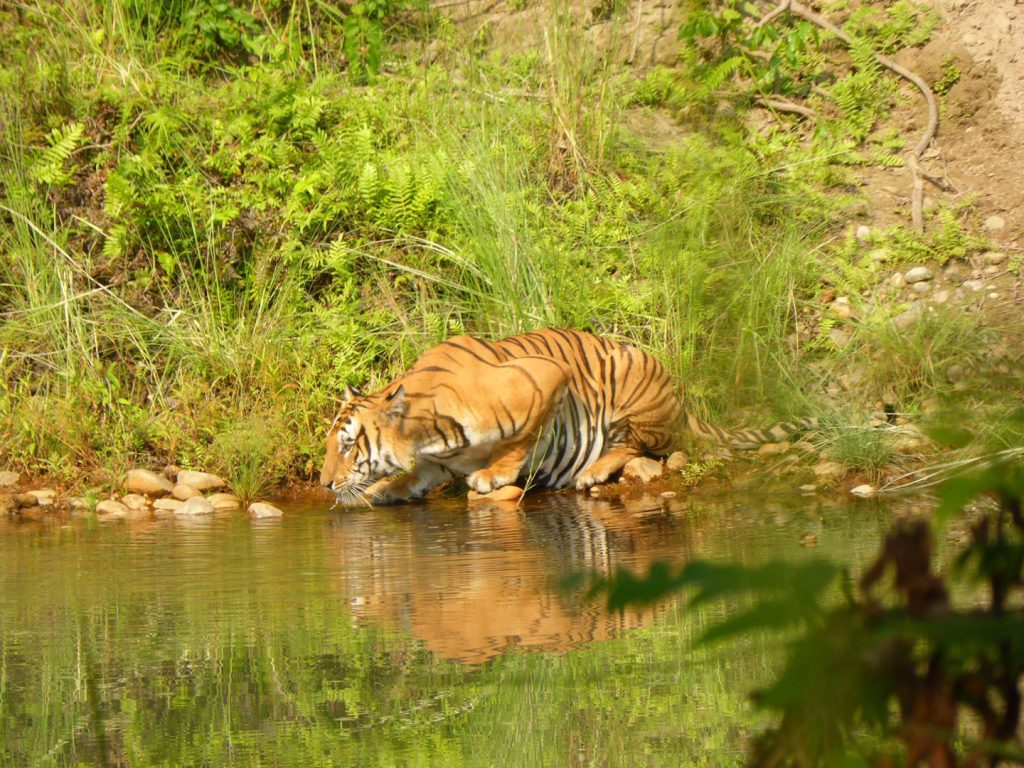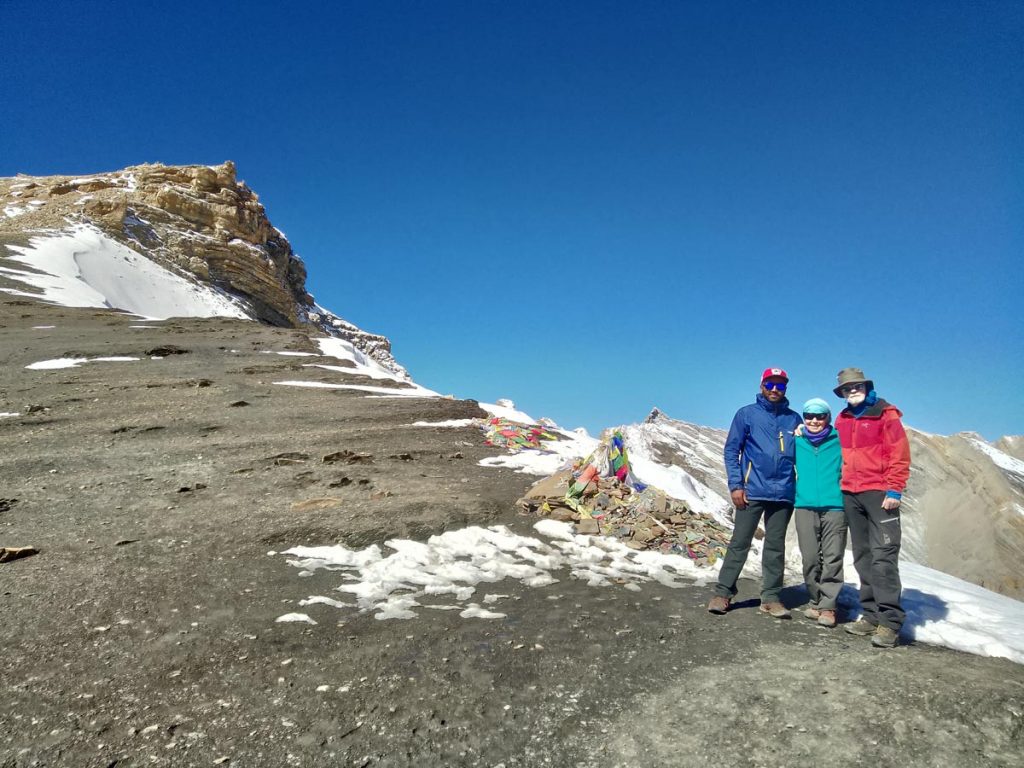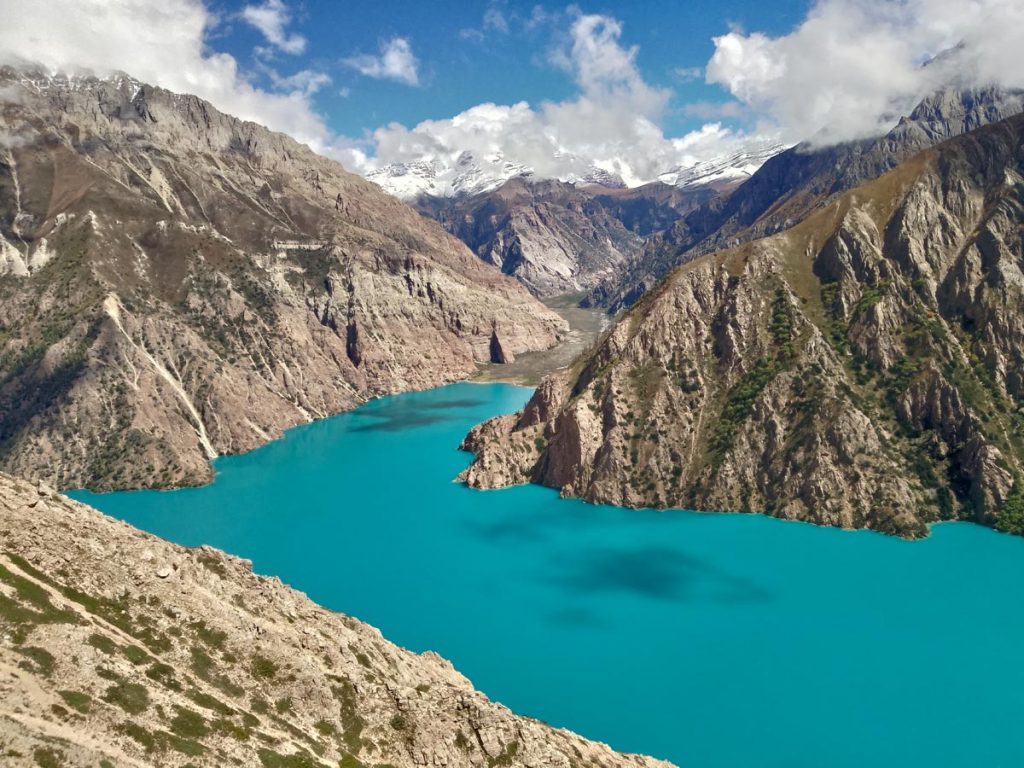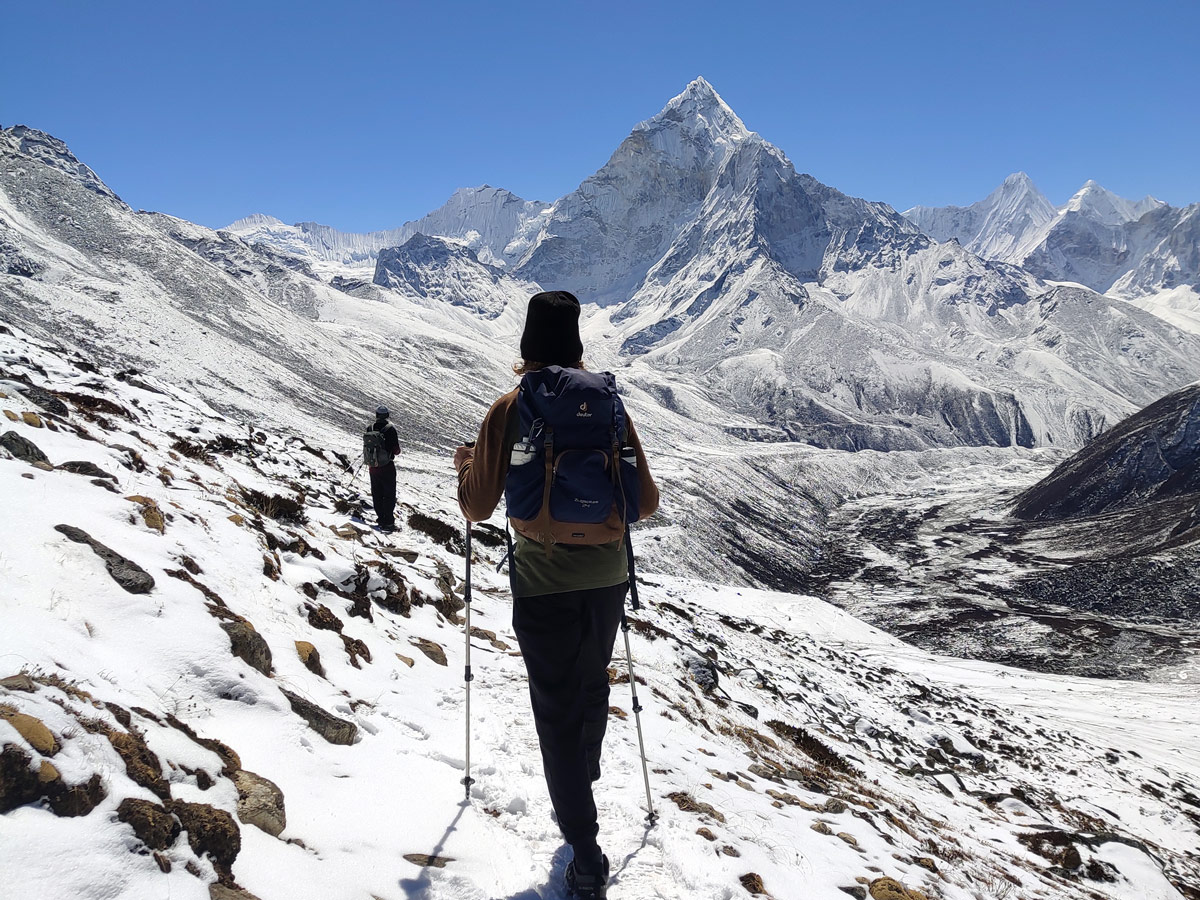Nepal is the land of towering peaks and rich biodiversity, a haven where nature meets culture. Amidst this, many national parks are scattered across the country safeguarding the precious natural heritage of the country.
The gateway to the Himalayan adventure and the unique wildlife encounters, these national parks allow visitors to witness the majestic jewels of the country while maintaining its sanctity.
From the lowlands to the high altitude, these national parks act as a haven for the wide array of flora and fauna including the endangered ones. Let’s take a glimpse into the 12 national parks of Nepal.
How many national parks does Nepal have?
There are a total of 12 national parks in Nepal divided among the lowlands of Terai, the hills, and the Himalayas. The jewels of Terai include the likes of Chitwan National Park, Parsa National Park, Banke National Park, and Bardiya National Park.

Similarly, Sagarmatha National Park, Langtang National Park, Makalu Barun National Park, Rara National Park, and more form the Himalayan sanctuaries.
Each of these 12 national parks holds significant value in the conservation efforts towards the rich ecosystem of Nepal.
Chitwan National Park
Spread over an area of 952.63 sq km and surrounded by a buffer zone of 729.37 sq km, the Chitwan National Park is the oldest national park in Nepal which was established in 1973.
One of the UNESCO World Heritage Sites, this national park is in the lowlands of Terai in south-central Nepal. A haven for wildlife enthusiasts, the Chitwan National Park is famous for its elaborate Chitwan Jungle Safari.
This national park is a sanctuary for a wide range of flora and fauna, including endangered species like one-horned rhinoceros and royal Bengal tigers. It inhabits 50 mammal species, 55 amphibians and reptiles, and over 525 birds.

Crocodiles sunbathing on the riverbanks and playful gharials are a common sight while you are on a jungle safari or an elephant-back safari.
Covered in greenery, 70% of the park area is covered with Sal forests and 20% is covered with grasslands, mostly elephant grass, as 50 different types of grasses are found here.
Birdwatching is a treat here as one gets to witness the beauties like lesser florican, giant hornbill, black stork, white stork, etc. accompanied by other migrant birds during September, November, February, and April.
Featuring a wide range of temperatures from 25 degrees to 43 degrees, this national park consists of a variety of ecosystems from the Churia hills, ox-bow lakes, and flood plains.
Sagarmatha National Park
Located in northeastern Nepal, the Sagarmatha National Park houses Mount Everest, the world’s highest peak. A UNESCO World Heritage Site, this national park established in 1976 is recognized worldwide.
Situated in the altitude range of 2,845 m at Monjo to 8,848 m at the top of Everest, most of the Sagarmatha National Park is located above the altitude of 3,000 m. It is spread over an area of 1148 sq. km with a 275 sq. km buffer zone.

This national park is a zone that blends breathtaking landscapes of gorges, glaciers, and mountains with the rich cultural heritage of the resilient Sherpa community.
The landscapes of the Sagarmatha National Park encompass a wide variety ranging from barren lands, sand, and cliffs to bushes, forests, vegetation, and even glaciers.
Home to diverse wildlife, flora like rhododendrons, birch, scrub, pine, hemlock, juniper, and alpine plants are found here while the national park is also the habitat of red panda, snow leopard, musk deer, Himalayan mouse, Himalayan Tahr and more.

The Sagarmatha National Park also offers a visual treat of more than 118 species of birds like snow cock, Impeyan pheasant, blood pheasant, and more.
Other 6000-ers located in the Sagarmatha National Park are Lhotse, Cho Oyu, Thamserku, Ama Dablam, Nuptse, Pumori and Island Peak.

Bringing you face to face with the Himalayan giants, the Sagarmatha National Park also features some of the popular trekking routes like the Everest Base Camp trek, Gokyo Lake trek, Everest Three Passes trek, Everest Base Camp Trek via Gokyo and more.
Langtang National Park
For those wanting an experience of the Himalayas without having to go all the way up to them, Langtang National Park is the answer. It is located near Kathmandu and takes you to the proximity of Himalayas.
Situated in the Central Himalayan region, the Langtang National Park was established in 1976 and spans over an area of 1710 sq km with a 420 sq km buffer zone.
This national park borders Tibet and encompasses a wide variety of landscapes from forests and waterfalls to glaciers, high meadows, and challenging passes amidst the traditional Tamang villages.

Housing several ungulate animals like Himalayan Tahr and musk deer, the Langtang National Park also inhabits animals like red pandas, Himalayan black bears, wild dogs, ghoral, snow leopards, and over 250 species of birds.
It is also home to the sacred lake of Hindus- Gosaikunda Lake which is one of its major attractions given the annual festival that takes place every year in August.

A treat for beginner trekkers, the region features three easy trekking routes- Langtang Valley trek, Gosaikunda Lake trek, and Helambu trek. Stops like Panch Pokhari and Ganja La pass add to your remote adventure.
Bardiya National Park
Located in the western Terai, the Bardiya National Park is characterized by rich biodiversity. It was established in 1976 and encloses a region of 968 sq km with a buffer zone of 327 sq km.
It is home to one-horned rhinos, tigers, swamp deers, black bucks, and wild elephants within the Sal and riverine forests. The tiger sightings are famous here which can be done through Bardiya Jungle Safari and elephant rides.

Not limited to terrestrial wildlife, the Karnali River in this national park is also home to aquatic wildlife like the endangered Gangetic dolphin, gharial crocodiles, marsh mugger, as well as a game fish called large mahasher.
Rafting expeditions are a treat in the fast-flowing waters of the Karnali River. Endangered birds like Bengal florican, lesser florican, and Saurus cranes are found here with regular visits of migratory birds.
Rara National Park
Rara National Park is the smallest protected area of Nepal tucked within a compact area of 106 sq km and a buffer zone of 198 sq km. It was established in 1976 and its altitude range is 2800 m to 4039 m at Chuchemara peak.
The main purpose of this national park is to protect the unique beauty of the pristine Rara Lake, which is the deepest freshwater lake in the country. The only fish recorded in this lake is the snow trout.

The Rara National Park is characterized by the coniferous forests surrounding the lake and fir, pine, birch, rhododendron, juniper, and spruce are some of the common plant species found in this region.
It is home to more than 20 species of mammals including the likes of musk deer, leopard, jackal, red panda, rhesus macaque, otter, yellow-throated marten, Himalayan black bears, and more.
Birdlife is highly active in this region as it has recorded over 214 species of birds making it a haven for birdsighting. Some of them are coots, grebels, mallards, red-crested pochard, gulls, and different species of pheasants.
The Rara Lake is the major attraction of the region whose beauty is enhanced by the enchanting backdrop of surrounding peaks, Himalayan flowers, and the magnificent conifer forests.
Frozen during the winters, experiencing Rara Lake during these months is an experience close to heaven accessible via the trekking trails surrounding the lake’s perimeter.
This national park also features beautiful peaks adding a backdrop to the lake like Chuchemara Peak (4,039 m), Ruma Kandh (3,731 m), Malika Kandh (3,444 m), and Murma Top (3,726 m).
Khaptad National Park
Located in the far western region of Nepal, the Khaptad National Park is famous for its unique ecosystem accompanied by the spiritual significance of the Khaptad Baba Ashram.
Established in 1984, this national park is spread over an area of 225 sq km and has a buffer zone of 216 sq km.
It holds a lot of religious value and festivals like Ganga Dashahara and Purnima are celebrated in the holy areas of the park like the Khaptad Daha, Shiva Temple, Sahasra Linga, Kedardhunga, Nagdhunga, and Ganesh Temple.
From forests and grasslands to meadows and plateaus, the Khaptad ecosystem comprises a wide range of landscapes and vegetation and you will find pine, rhododendrons, sal, spruce, oak, maple, and lots of flora here.
Home to about 125 species of flowers, this region also features a wide variety of medicinal herbs- somewhere beyond 224 species. This also attracts several insects like butterflies and moths to the region.
Having reported about 266 bird species, the region has beautiful Danphes, bulbuls, cuckoos, eagles, partridges, and many other birds.
Although not as teeming as some other national parks, this park houses 20 species of mammals like barking deer, goral, rhesus and langur monkey, musk deer, Himalayan black bear, and more.
Makalu Barun National Park
The Makalu Barun National Park was established in 1992 and was previously a conservation area. It spans across an area of 1500 sq km with a buffer zone of 830 sq km.
Home to the fifth highest peak in the world- Mt. Makalu, this national park encompasses a wide range of elevations from the lowland tropical forests to the high-altitude alpine tundra as it culminates at 8,485 m.

Other peaks here are Mt. Chamlang (7,319 m), Mt. Baruntse (7,129 m), Mera Peak (6,654 m), and Cho Polu (6,735 m) among the towering peaks forming the skyline in the region with adventures like Mera Peak climbing awaiting you.
It also features trekking trails with rugged terrain, rocky paths, and sheer cliffs which adds to the adventure of the trekkers wanting to explore the region.
In terms of flora and fauna, this region features snow leopard, red panda, musk deer, and wild boar, accompanied by 25 species of rhododendrons, 47 types of orchids, and 56 rare plants.
Shey Phoksundo National Park
The largest national park of Nepal, the Shey Phoksundo National Park extends across an area of 3,555 sq km with a buffer zone of 1349 sq km.
It is situated in the Trans-Himalayan region of Nepal and was established in 1984 while focusing on protecting its unique ecosystem.
The park features a huge difference in altitude ranging from 2,130 m in Ankhe to 6,883 m at the top of Kanjiroba. Within this altitude difference lies a diversity of spectacular landscapes and biotic systems.

From barren Himalayan areas to the minimum presence of forests, this region includes a little bit of everything like rhododendron, juniper, and Himalayan birch, as well as bamboo, blue pine, hemlock, cedar, and many more.
Endangered species along with other animals like snow leopard, grey wolf, blue sheep, Tibetan sheep, goral, and musk deer, are also found here along with six species of reptiles and 29 species of butterflies including the highest flying one.
With 286 species of ethnobotanically important plants, it also provides shelter to over 200 species of birds like wood accentor, crimson-eared rosefinch, wood snip, and more.
The main attraction of this region is the Phoksundo Lake which is the deepest lake in Nepal and cascades the highest waterfall of Nepal too. The turquoise lake boasts clarity and is also hailed as a sacred site for the Buddhists.

It is home to the jagged Kanjiroba range along with Hiuchuli (6,553 m), Tripura Thumba (6,553 m), Kande Hiuchuli (6,552 m), Chandi (6,435 m), Palchung Hamga (6,430 m), and more.
Trekking in this region is a challenge worth taking if you are an adventure seeker as you get to experience the quaint villages of the region combined with the rich biodiversity and the Tibetan culture against the majestic backdrop of the Kanjiroba range.
The Upper Dolpo trek is one of the popular adventures nestled in this region and takes you to the wild remoteness amidst the beautiful landscapes.
Shivapuri Nagarjun National Park
The Shivapuri Nagarjun National Park lies in the transitional zone between subtropical and temperate climates and is spread across an area of 159 sq km with a buffer zone of 118.61 sq km.
Located at a distance of around 12 km from the Kathmandu Valley, this national park is a great green escape featuring rich natural biodiversity. It was established in 2002.
Pine, oak, and rhododendrons are common flora here with mammals such as rhesus monkeys, jungle cats, leopards, and Himalayan black bears.

The main highlight of this national park is its accessibility from Kathmandu. Also, the rivers like Bagmati and Bishnumati falling in this region are the main source of water for the valley.
The origins of these rivers, Baghdwar and Bishnudwar, are considered sacred by Hindus and are worshipped on the Nepalese New Year’s Day.
Providing a break from the hustle and bustle of the city, hiking in this region is quite common given the stunning view it provides of Kathmandu Valley as well as the Himalayan ranges.
Banke National Park
Located in the Mid-Western Development region, the Banke National Park was established in 2010 and encompasses an area of 550 sq km and 343 sq km of buffer zone.
This park is linked with wildlife sanctuaries in India as well as with the Bardia National Park and is an extension of the Terai Arc landscape. Rapti River and Babai River are the water bodies that flow in the region.
It features 8 ecosystem types: Sal Forest, deciduous Riverine Forest, savannahs and grasslands, mixed hardwood forest, flood plain community, Bhabar, and foothills of Chure range.
With almost 90% of the forest being composed of Sal, Sisoo, Karma, and Khair, this region inhabits 124 plants, 34 mammals, over 300 birds, 24 reptiles, 7 amphibians, and 58 fish species.
Protected wildlife like tigers, striped hyenas, four-horned antelope, Asiatic wild elephants, pythons, gharial, giant hornbill, floricans, and black storks are also found here.
Shuklaphanta National Park
Previously managed as a hunting reserve, the Shuklaphanta National Park was established in 1976 and spans an area of 305 sq km with a buffer zone of 243.50 sq km.
As the name states, this national park is known for its expansive open grasslands that dominate the landscape of this region along with the Sal forests.
Despite the compact area, it inhabits a variety of wildlife like swamp deer, rhinos, elephants, and tigers. It shares its borders with the UP district of India and a Mahakali River flows here where you might even spot the Gangetic dolphins.
Birds like egrets, storks, and peacocks, as well as the largest population of Bengal floricans, are available in the Shuklaphanta National Park which can be spotted during jungle safaris and wildlife watching.
Parsa National Park
Contiguous with the Chitwan National Park, the Parsa National Park spreads across an area of 627.39 sq km and has a buffer zone of 285.30 sq km.
This is also located in the lowlands of the Terai region and was established in 1984. The newest sanctuary of Nepal, it was gazetted as a national park only in 2017 and was previously a wildlife reserve.
The temperature here experiences a dramatic shift from 0 degrees in winter at nighttime to 40 degrees during summer. The region mostly features tropical and subtropical forests with Sal being the major vegetation.
Home to a variety of wildlife, it includes species like blue bull, chital, langur, palm civet, and striped hyena, as well as endangered species like Asian elephant, royal Bengal tigers, sloth bears, and leopards.
It also features different types of snakes like the common cobra, king cobra, python, and common and banded krait. The region also includes some of the places of religious importance for the Hindus.





